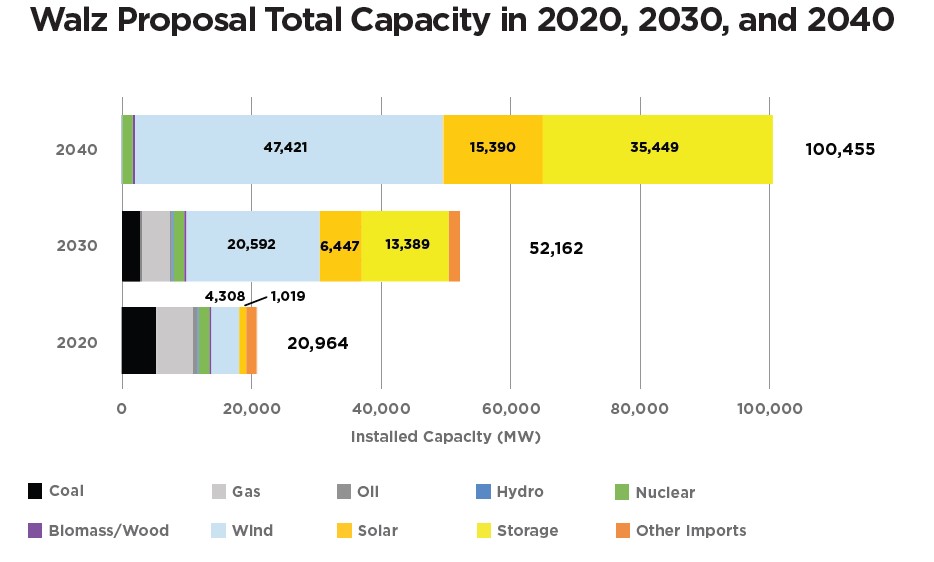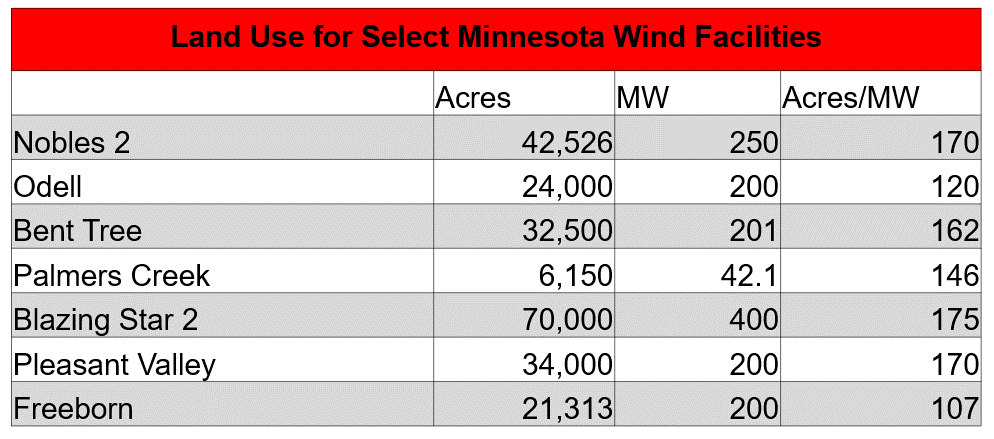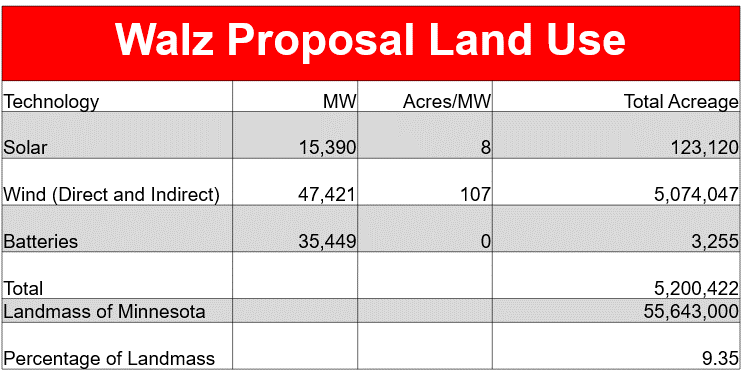Walz’s 100 percent carbon-free electricity mandate by 2040 would require huge tracts of land
Governor Walz and other liberal lawmakers have proposed legislation that would require Minnesota to derive 100 percent of its electricity from carbon-free resources by 2040, but his proposal would not allow for new nuclear power plants to be built, essentially making his proposed regulations a wind, solar, and battery storage mandate.
American Experiment released a 65-page report detailing how this policy would increase electricity costs, and make our state more vulnerable to blackouts. Today, we will talk about how much land Governor Walz’s proposal would require.
Huge tracts of land
American Experiment’s research found that the Walz Proposal would require Minnesota to build massive quantities of wind, solar, and battery storage capacity to meet our electricity demand for every hour of the year 2021.
The Walz Proposal would require 47,421 megawatts (MW) of wind, 15,390 MW of solar, and 35,449 MW (141, 796 MWh) of battery storage capacity, which represents a five-fold increase over the electric grid that served Minnesota’s electricity needs in 2020.

Building these wind, solar, and storage facilities would consume huge quantities of land.
According to electric utility personnel in Minnesota, Solar facilities generally require 8 acres per megawatt of installed capacity. Energy Storage Landowner Partnerships states that battery storage facilities usually require 0.022 acres per MWh of installed capacity.
A quick overview of the land used at select Minnesota wind facilities shows they require between 107 and 170 acres per MW of installed capacity, as shown in the table below. For our analysis, we will assume wind facilities require 107 acres per MW.

This gives us the information we need to estimate the amount of land necessary for the wind turbines, solar panels, and battery storage facilities required under the Walz Proposal. In total, the mandate would require 5.2 million acres of land or 9.35 percent of the landmass in Minnesota, which you can see in the table below.

It is important to note that while wind facilities occupy a lot of land overall, the amount of land that is directly impacted by wind turbines, substations and access roads is much smaller, generally only 0.75 acres per MW of installed capacity, leaving much of the land inside of the wind facility open to other uses like row cropping.
When we look at the land use this way, the Walz Proposal would consume about 162,000 acres, which amounts to only 0.29 percent of Minnesota’s landmass, which you can see in the table below.

The estimated land use for wind facilities create drastically different results for our land use calculations, but even using direct land use assumptions for wind, the Walz proposal would use far more land than the Lower Cost Decarbonization (LCD) Scenario that relies on a suite of dispatchable low-carbon technologies like new nuclear power, large hydro in Canada, carbon capture and sequestration, and battery storage, which we will detail in a later post.